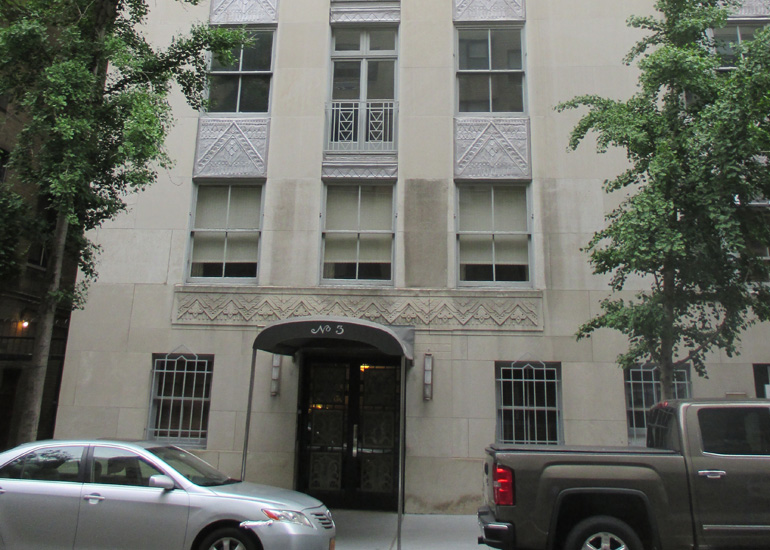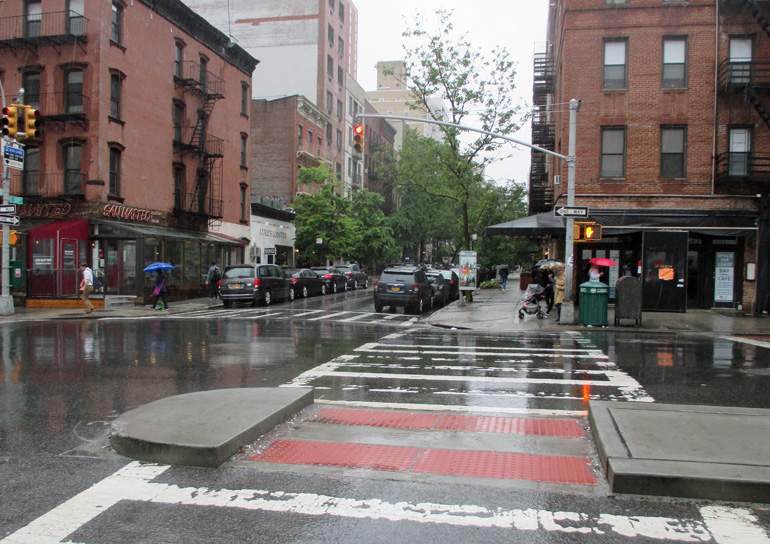Gotham Diary:
Muddles
June 2017 (IV)
Wednesday, June 28th, 2017
28 and 29 June
Wednesday 28th
In a screed published at n+1, Nikil Saval’s fury boils down a very intriguing equation.
What Plouffe and the ride-sharing companies understand is that, under capitalism, when markets are pitted against the state, the figure of the consumer can be invoked against the figure of the citizen.
This is so nicely put that it has the force of a revelation. Sure, we already “knew” it. We were aware, for example, that antitrust jurisprudence in the United States has been eroded to a brainless fixation with low prices. We understood that endless consumption, much less the endless growth of consumption, is unsustainable on its face. We sensed the circularity of everyone’s taking in everyone else’s wash in the extent to which Wal-Mart customers have jobs on a par with those of Wal-Mart employees. And I must have written somewhere that one of the professional class’s worst failings has been its opting out of public services. But Saval has steamrolled these complications into a nugget of wisdom: the only first step on the way to reversing environmental degradation is for citizens to stop being consumers.
Obviously, citizens have to eat. They have to get to work. Everyone needs a new couch from time to time. Far be it from me to preach a minimalist line! We can’t live without consuming resources. The difference between a citizen and a consumer is that the citizen frets about those resources. Are they renewable? If not, what happens when they’re exhausted? The citizen strives to consume only what can be replaced, and to do so in a way that does not foul his neighborhood or anybody else’s. The citizen supports government with taxes so that it can maintain a safe and healthy social infrastructure that would not be provided otherwise.
Citizenship has become a problem because the walls that used to demarcate and separate internally homogeneous communities have not only broken down but been ripped away in a whirlwind of raised consciousness. Nobody wants to recognize this as a problem that we have to solve. There are plenty of Americans who want to go back to the way things were, even if most of them aren’t old enough to remember what that was actually like; while plenty of others want to replace atavistic bonds with elective affinities. But the awful truth is that citizenship, at least when it’s a matter of shouldering the burdens of citizenship and not just enjoying the benefits, is a lot more enthusiastically undertaken when the folks marching in the parade look just like the folks watching from the sidewalks. This is a truth that is almost universally unacknowledged. Maybe just acknowledging it would help us. It would certainly be a start on the way to looking at each other with greater penetration and sympathy.
Of course, there is no need to Saval to mention capitalism. The apparent nexus of capitalism (a means of funding enterprise), markets (sites for trading goods), and consumers (egalitarian shoppers) is just that: apparent, as much historical accident as anything. If anything, the consumer is the bastard child of the French Revolution and socialism, demanding equal access to what everybody else has, whether it’s needed or not; genuine capitalists are parsimonious. These terms have gotten horribly mixed up in the course of my lifetime, and instead of taking on new meanings, they’ve mostly collapsed into whatever-I-want-it-to-signify incoherence.
***
Thursday 29th
Just now, I came across a very interesting post on a Web site that I hadn’t seen before, The Fifth Wave. It’s about my favorite subject, the failed American élite. The author — whether Adam Gurri or Martin Gurri I can’t tell — writes, as I hope I do, from inside the élite, and yet I feel that in both our cases it is without any self-interest that we declare the inevitability of élites. They arise naturally at the top of any society. The problem is that élites have children, and the children grow up at the top. This has obvious advantages (for everyone) but also some tricky disadvantages. We know a lot, anecdotally, about the disadvantages, but we don’t know much about preventing them. Very little attention has been given to the education of élite children, doubtless because of their powerful parents. It occurs to me out of the blue that one of the rare good things about the medieval propertied class was the practice of sending sons to grow up in the households of other landowners, usually wealthier ones. This must have been helpfully, if only partially, humbling.
Mr Gurri discusses the thought of Ortega y Gassett at length. The idea of an élite that is comprised of people whom others admire is a very appealing one. But it is greatly at odds with the theory and practice of meritocracy. Admiration has precious little to do with the rise of testably talented individuals, who learn among other things how to excite the admiration of the élites, not the people whose respect is essential to élitist legitimacy. Meritocracy produces an élite of the unknown, which is certainly part of the problem in throughout the West.
In a surprising acknowledgment of failure, a group of central bankers meeting at Sintra, in Portugal, to address the prospect of “robocalypse” — the takeover of blue-collar jobs by robots — has “conceded that they have not paid enough attention to how much technology has hurt the earning power of some segments of society, or planned to address the concerns of those who have lost out.” But wait. The “concession” appears without attribution in Jack Ewing’s Times story. Perhaps the bankers, who included Ben Bernanke and Mario Draghi, never said any such thing at Sintra. Still, it’s a start. It would be wrong, I think, to call this snag in economists’ attention a dereliction. But it’s an example of the way in which highly-trained élites can miss new developments. More specifically, it’s an example of the tendency of liberal economists to let employment take care of itself, interfering only indirectly with monetary controls and the like.
Another failure that comes to mind is more collaborative in nature, with economists and journalists muddling together to leave economic terminology in a shambles. One of the most pernicious confusions is that of capitalism, a very important economic tool, albeit one whose usefulness is more probably more limited than would-be “capitalists” like to think, with the windfall fortunes that have accrued to a handful of lucky entrepreneurs and their heirs. If economists and journalists took the trouble to distinguish the one from the other, it might be politically feasible to put some limits on the windfalls without hobbling the effectiveness of the tool. As it is, far too many well-educated Americans are uneasily convinced that capitalism is some kind of necessary evil, while the real evil, insanely protected mountains of money, are allowed to continue piling up, almost certainly never to be taxed. On another front capitalism the tool is confused with the corporation, a legal construct.
If we were thinking more clearly, we might borrow some thinking from the idea of copyright, but first we’d have to clean up the mess that has accumulated around it in the age of “intellectual property.” Copyright (and its sibling, the patent) creates a temporary monopoly, as the reward for good ideas. We have seen the duration of these monopolies pushed further and further into the future, when in fact they ought to be shortened and their ownership limited to actual human beings. Thanks to sloppy thinking, patent and copyright holders have been encouraged to forget that their monopolies are gifts bestowed by society, not manifestations of personal genius or persistence. The very idea of contracting the reach of patents and copyright would probably be denounced as “socialist” — that ultimate insult, a term as nearly devoid of literal denotation as one of our most unprintable vulgarities.
Bon week-end à tous!




